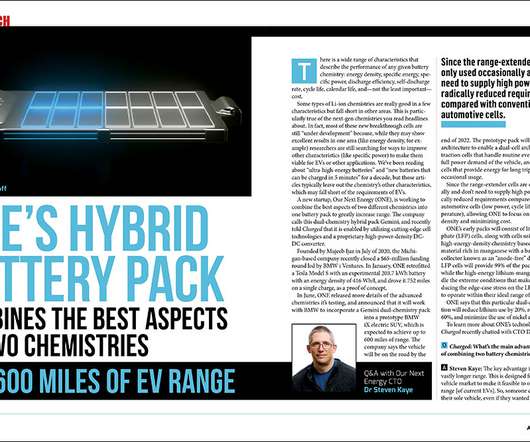Study finds highly-turbocharged alcohol-fueled DISI engines could be more efficient than diesels
Green Car Congress
NOVEMBER 1, 2010
Highly turbocharged alcohol-fueled direct-injection spark-ignition (DISI) engines operated at a high compression ratio could be as or more efficient than diesel engines while also providing advantages of lower vehicle cost, lower emissions and higher power, according to a recent modeling study by Leslie Bromberg and Daniel Cohn at MIT.















Let's personalize your content